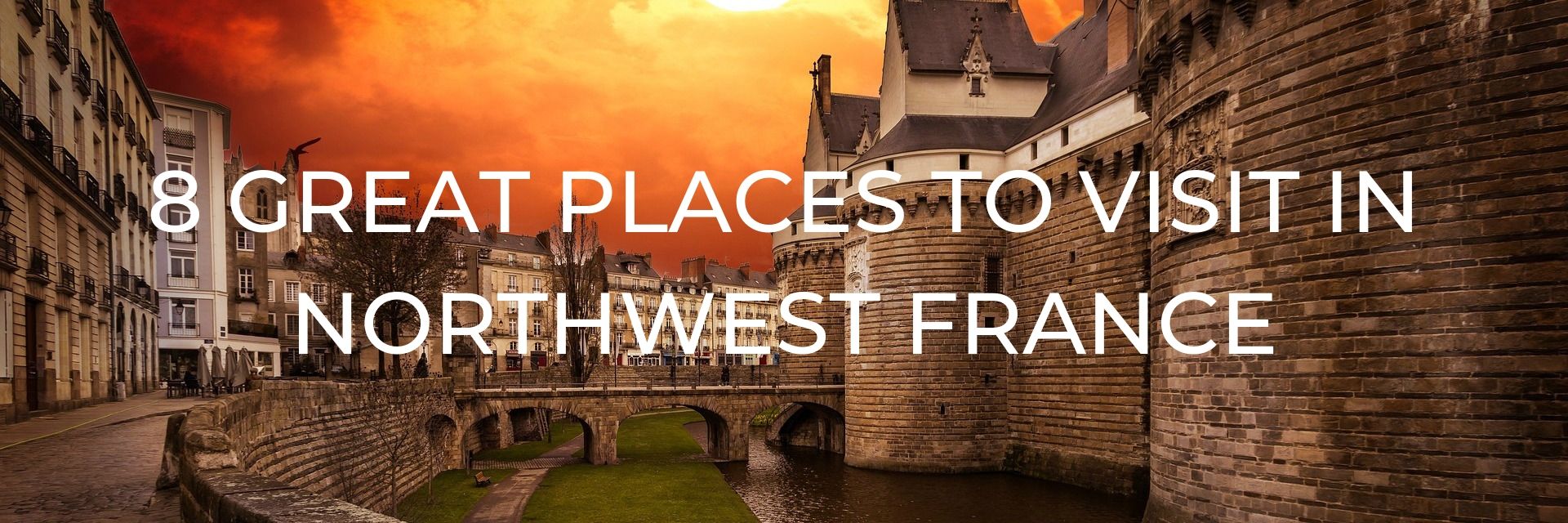
Rolling hillsides, rocky cliffs, towering cathedrals, and elegant chateaux – a visit to northwest France offers all of these and much more. This area is made up of the smaller regions of Brittany, Normandy, and the Loire with this guide featuring mainly recommendations for Brittany.
Rich with history, especially that which is deeply entwined with the south of England, this region has a long tradition of migration and trade across the channel going back to long before Roman times. This history has contributed to the unique culture and a landscape that bears the markings of centuries of struggles and triumphs.
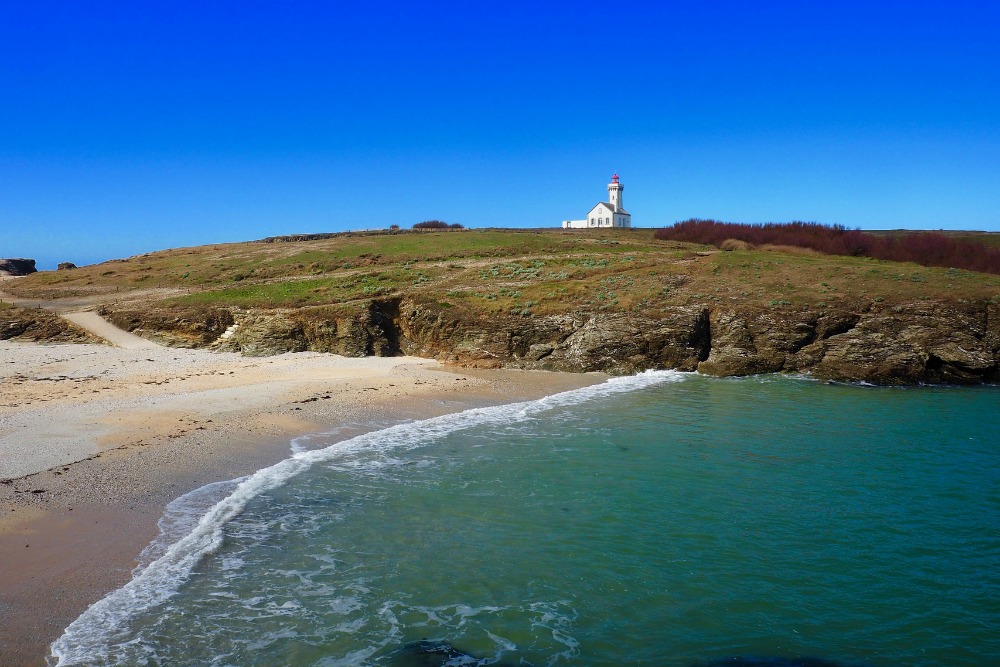
With all of this history, culture, and a variety of coast and inland destinations, there is sure to be something for all visitors to enjoy.
Whether you’re visiting for a weekend, a week … or longer, here are eight great places to visit in Northwest France to experience the best the region has to offer.
This post may contain affiliate links. Please read our full disclosure policy here.
TABLE OF CONTENTS
8 GREAT PLACES TO VISIT IN NORTHWEST FRANCE
The thing about the Unesco World Heritage town of Dinan is that it’s not exactly full of discrete places to visit. The entire town is the attraction for its ambience, its architecture, and yes, its food.
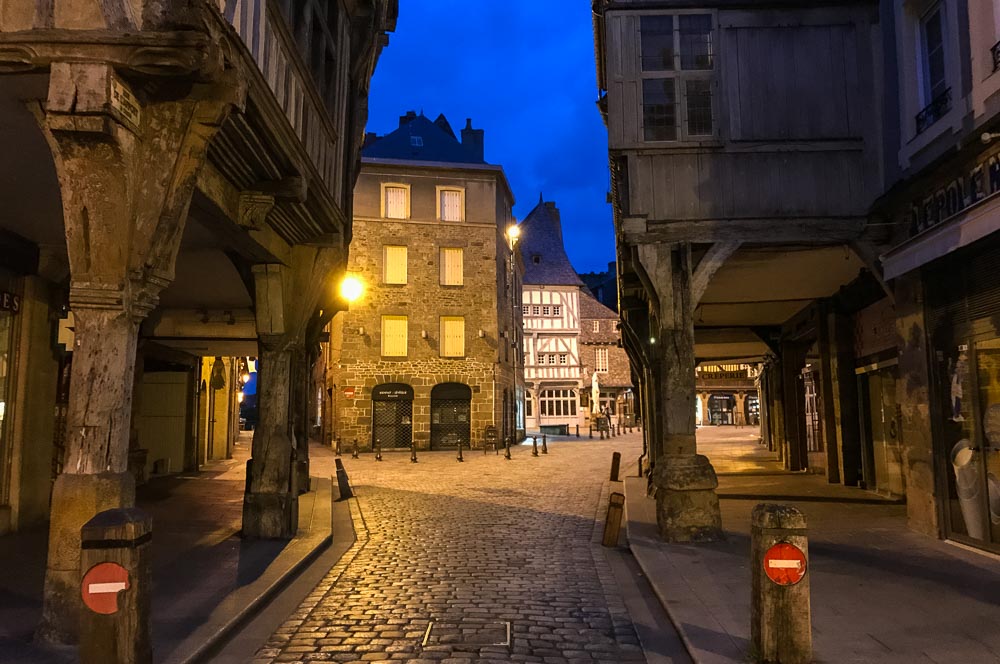
MUST DO IN DINAN:
- Stroll through the town: Dinan escaped the damage of World War II, and so today presents an uninterrupted medieval tableau of open squares, half-timbered buildings, and city ramparts that are worth crawling around. Spend some time in the Place des Merciers, the old commercial center of the city and while there, take note of the buildings’ small ground floors, topped with larger floors that overhang the street that make lovely space for a walkway, or maybe a café, and to keep you out of the sun or rain.
- Explore by bicycle: Take a long bike ride around the city, especially along the River Rance, which provides a much easier ride, and delightful views of the city built into the mountain above. There are churches to see, but, unlike so many French towns, these are not the main attraction. The Eglise St. Malo, however, is worth a stop for its beautiful windows.
- Savour the cuisine: Dinan, and Brittany, are more Celtic than traditional French, and the cuisine (and street names) are the main indicators of that provenance. The primary dish of Dinan is the galette, a buckwheat crepe stuffed with savoury delights. We tried them several times with such fillings as ham, eggs, gruyere, and onion confit with sausage, and smoked salmon. All were delicious, especially when washed down with the local cider or the local beer, Duchesse Anne Triple. Some of the restaurants that definitely merit a visit are the Restaurant La Cale at Plouer Sur Rance, where you’ll join the locals ordering the daily specials off the blackboard and enjoying the view of the river. Don’t miss the Creperie Le Connetable, right in the centre of the medieval hilltop town, where you’ll pick one of the above-mentioned galettes. Finally, if you’re looking for a little more elegance, try the Le Cantorbery for one of the best meals of the week. Though reservations are recommended, they often manage walk-ins in the upstairs dining room.
Contribution and Photo from Tom of Travel Past 50
Founded over 2,000 years ago at the confluence of the Marle and Vincin rivers which flow into the Gulf of Mor-Bihan or “little sea”, Vannes is a market town with a long history. Fortified by city walls, it was besieged in 1342 by both sides of the Breton War of Succession but escaped much of the devastation of the world wars allowing many medieval buildings to remain in the town centre.
With narrow cobbled streets and half-timbered houses within the walled city and a beautiful garden outside the east wall, this is a picturesque city that is great to wander around and soak up the history and architecture.
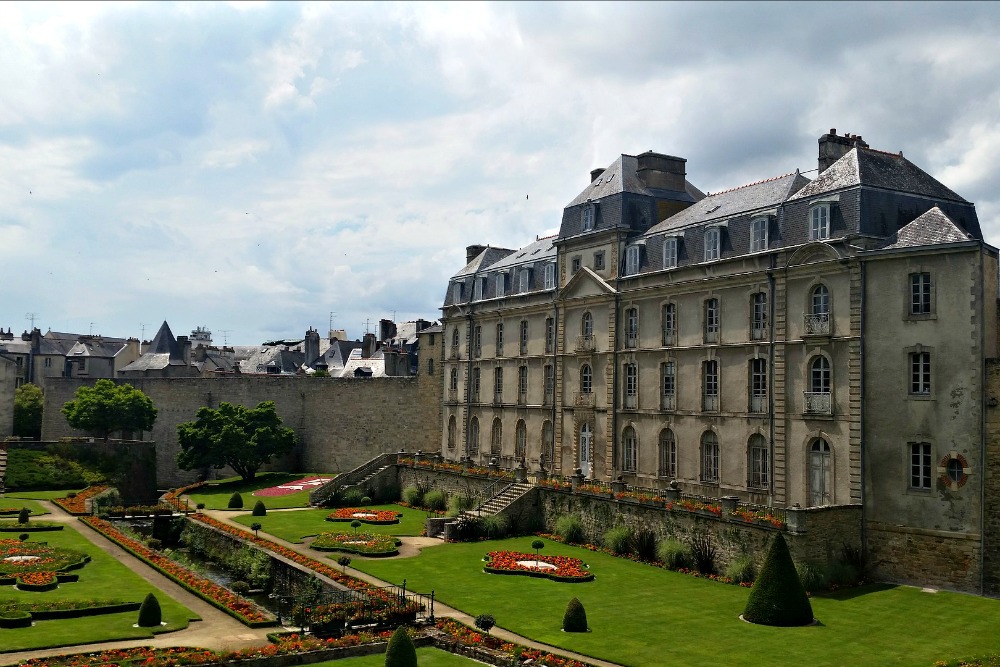
MUST DO IN VANNES:
- Cathedral of St. Peter: This Gothic church is one of the largest buildings in the area and the bell tower dates back to the 13th-century. Housing the relics of Saint-Vincent Ferrier since his death in 1419, it was made a minor basilica in 1870 by Pope Pius IX.
- Walk the City Walls: Some of the best-preserved in France, the city walls of Vannes date back in places as far as the 3rd-century. Only a small part of the ramparts can be walked on for great views across the city, but be sure to view the magnificent gates that allowed access to the city too.
- Chateau Gaillard: Completed in 1410 as an administrative building, the chateau had several owners before being turned into a museum in 1914. With each floor covering a different period of history, the beautiful setting and the array of the collection make the museum a great way to spend a couple of hours
Situated on the Loire river, the port city of Nantes was once the capital of Brittany, though today it isn’t even in Brittany as the boundaries have been redrawn. The city grew as a thriving port trading in raw materials, goods, and slaves. The French Revolution and the abolition of the slave trade precipitated an economic decline until replacement industries such as ship-building were introduced.
Today a memorial to the fact that the slave trade financed much of the cities splendour is located on the waterfront near Pont Anne de Bretagne. A great way to explore the city is to follow the Nantes Green Line, which is literally a green line painted on the ground to follow for 14km past many of the cities sights, including the slavery memorial.
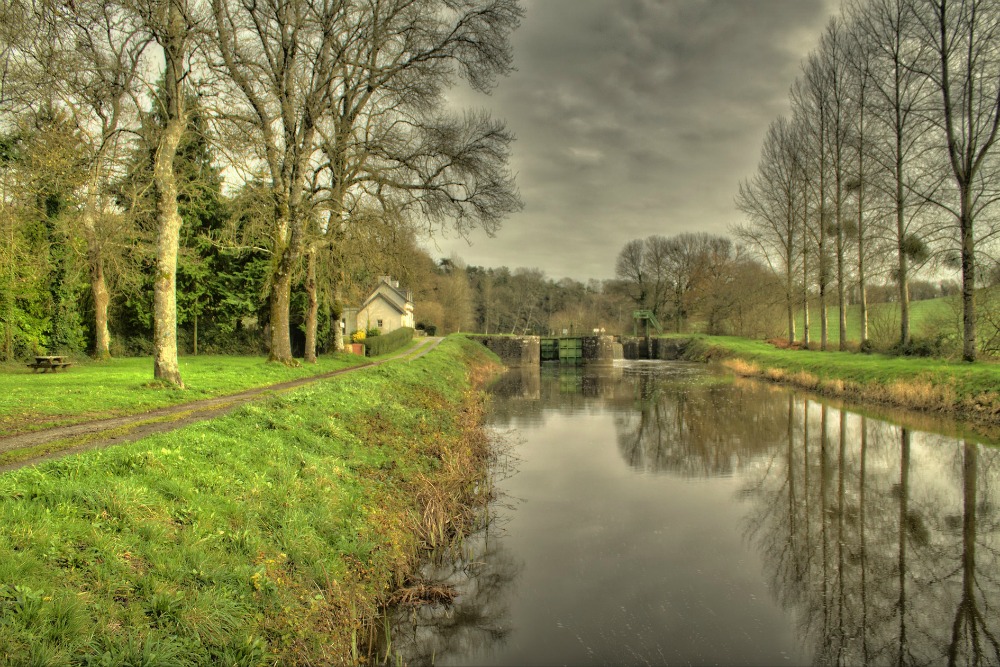
MUST DO IN NANTES:
- Machines of the Isle of Nantes: Located in the former shipyards of the Isle of Nantes, this artistic and cultural tourist attraction consists of magnificent mechanical machines such as the Great Elephant, which is 12m high and can take 49 passengers for a 45-minute walk.
- Chateau des Ducs de Bretagne: Anne de Bretagne’s castle offers visitors the urban history museum within chateau which from the city looks like a fortress but from the inner courtyard a stunning ducal residence. The museum showcases the history of the city including its role as a trade port, the French Revolution and both world wars.
- Passage Pommeraye: This beautiful 19th-century shopping mall was opened in 1843 and has appeared in movies such as Lola. Linking two streets together which are over 9m apart vertically, the mall has steps in the middle to change level before continuing. Even if you don’t want to shop, it’s worth a visit for the architecture alone.
Reviews of Machine of the Isle of Nantes | Reviews of Chateau des Ducs de Bretagne | Reviews of Passage Pommeraye
Once a pirate’s haunt, the fortified town of Saint-Malo is now rich in cobblestone streets and amazing houses built by people who gained their wealth from their privateering in the 17th and 18th centuries.
Heavily bombed in 1944 when it was mistaken for an enemy base, the city was reconstructed and is now one of the most beautiful towns in France.
As well as the summer home of Jacques Cartier, the medieval pirates known as Malouins were the first to settle the Falkland Islands in the South Atlantic, hence the Spanish name for the islands, Las Malvinas. An active port even today with ferry services to the Channel Islands and England, Saint-Malo is well worth a visit.
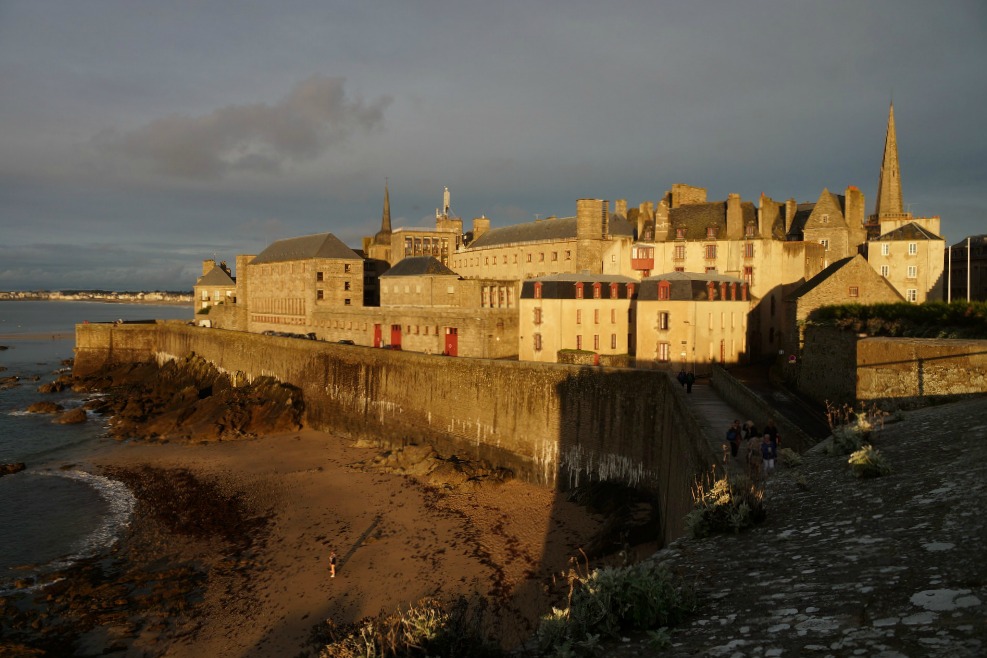
MUST DO IN SAINT-MALO:
- Fort National: Only accessible at low tide, this 17th-century fortress is located on a rocky outcrop just north of the city. Guided tours of both enclosures and the underground take you through the history of the fort and its role in the defence of St Malo.
- Citadel: Now the old town of Saint-Malo, the citadel was originally a granite island only accessible via a long causeway. This changed when the inner harbours were created and the town was connected to the mainland. Although the citadel looks old, it is mostly reconstructed after the devastation of the second world war. Today you can walk an almost entire circuit of the walls for great views of the town.
- Musée Jacques Cartier: The Manoir de Limoëlou was the summer home of Jacques Cartier, the man who discovered Canada. The guided tour of the home shows some of the navigational instruments Cartier would have used to traverse the Atlantic and the home is decorated in period furniture to show it may have looked when he lived there.
Reviews of Fort National | Reviews of Citadel | Reviews of Musée Jacques Cartier
On the edge of the Loire Valley, a UNESCO world heritage site, and on the Maine River, Angers was a medieval seat of power for the Plantagenet dynasty. The town is the perfect gateway to the Loire Valley as well as offering plenty of attractions of its own.
The town is dominated by the impressive Chateau d’Angers with its seventeen towers and offers panoramic views of the city whilst the old town has half-timbered houses, including the Adams house with façade of carved wooden characters to the south-west of the cathedral.
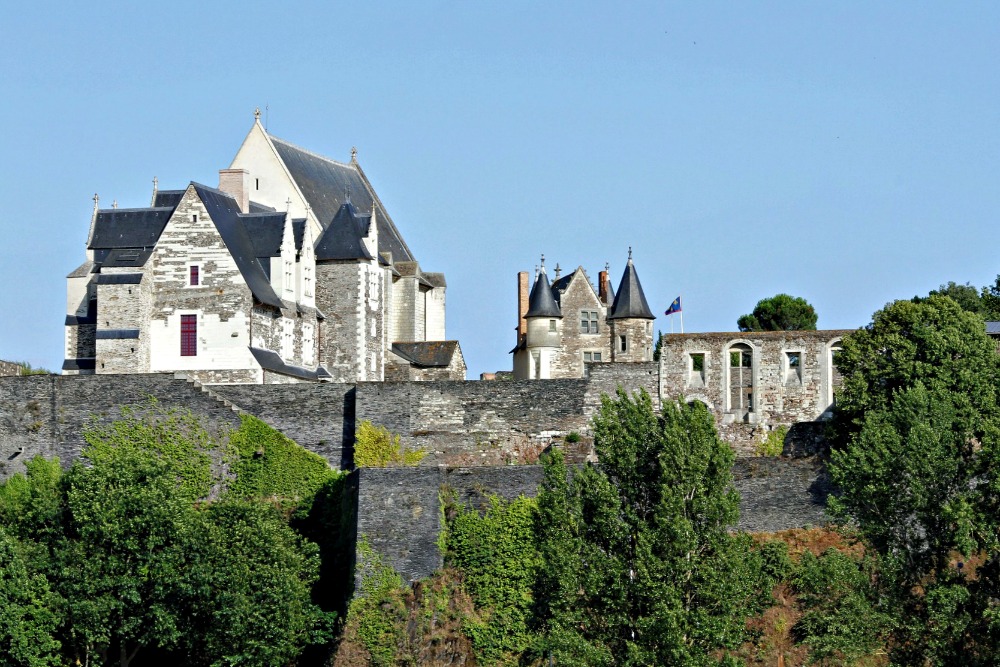
MUST DO IN ANGERS:
- Chateau d’Angers: Founded over 1,000 years ago in the 9th-century, Chateau d’Angers has a long and varied history. Used for military purposes right through to WWII, the former Plantagenets castle now houses the oldest and largest collection of medieval tapestries in the world, including the Tenture de l’Apocalypse tapestry which depicts the Book of Revelations.
- Jardin des Plantes d’Angers: Dating from the 18th-century and containing over 2,000 varieties of plants, Jardin des Plantes depicts an English park complete with a stream, statues and winding paths through the park.
- Saint Maurice Cathedral: Built between the 11th and 16th centuries, this Gothic and Romanesque cathedral with its 75m twin spires is famous for its stained glass windows which date from the 13th-century, the same era as the painted wall depicting the life of St. Maurilius.
Reviews of Chateau d’Angers | Reviews of Jardin des Plantes d’Angers | Reviews of Saint Maurice Cathedral
Brest in the far north-west of France in Brittany is a maritime city with a rich history. During WWI it was a major disembarkation port for troops arriving from across the Atlantic and during WWII it was used by the Nazi’s as a U-boat base. Heavily bombed and almost completely destroyed during the battle to liberate it, the city was rebuilt once hostilities ended.
Today Saint-Malo Street, an authentic street from the 17th-century, is the oldest street in the city, while the docks and marina are a pleasant place to wander or people watch. Keep an eye out for the houses built on hills so steep, steps are required and where the 2nd floor of one house can be alongside the 1st floor of its nextdoor neighbour!
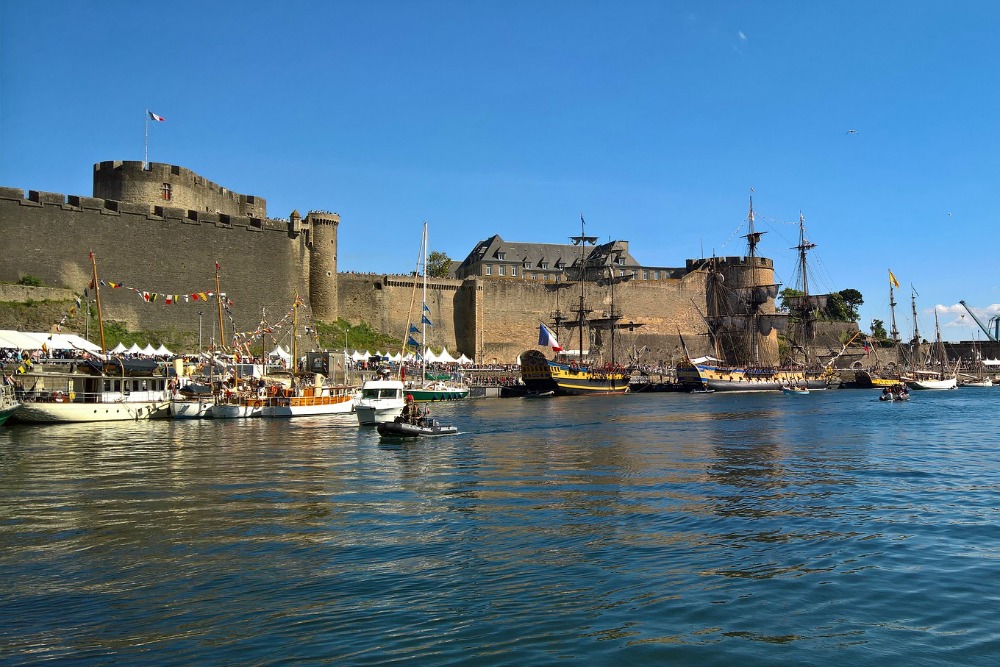
MUST DO IN BREST:
- Chateau de Brest: Offering over 1700 years of history, the impressive Chateau that stands today has buildings dating back from the 13th-century and was completed in the 17th. The fact it remains an active military installation, housing the maritime command of the Atlantic, makes it the oldest active military place in the world.
- Océanopolis: Take a journey through the world’s oceans, from colourful tropical fish to the largest penguin colony in Europe from the Antarctic and the creatures that live in the oceans along the nearby Breton Coast.
- Brest History Museum: Located in the impressive Tour Tanguy, believed to have been constructed during the Breton War of Succession, the history museum houses large dioramas to show the history of the city.
Overlooking Baie de La Foret in Brittany, Concarneau has been a major fishing port for hundreds of years and still catches thousands of tonnes of tuna each year. Visitors can visit the fish auction, cannery and sometimes witness the fisherman returning and unloading their catch. You can often catch fishing boats coming or going from Place du Petit Chateau, a green space within the old town.
For one week in August, there is the Filets Bleus festival, a costumed parade named after the blue nets the fisherman use and celebrating the town’s history with music and parades. A great way to get a feel for the town is to ride the Celtic train, this land train tours the town in 35-40 minutes during the summer months.
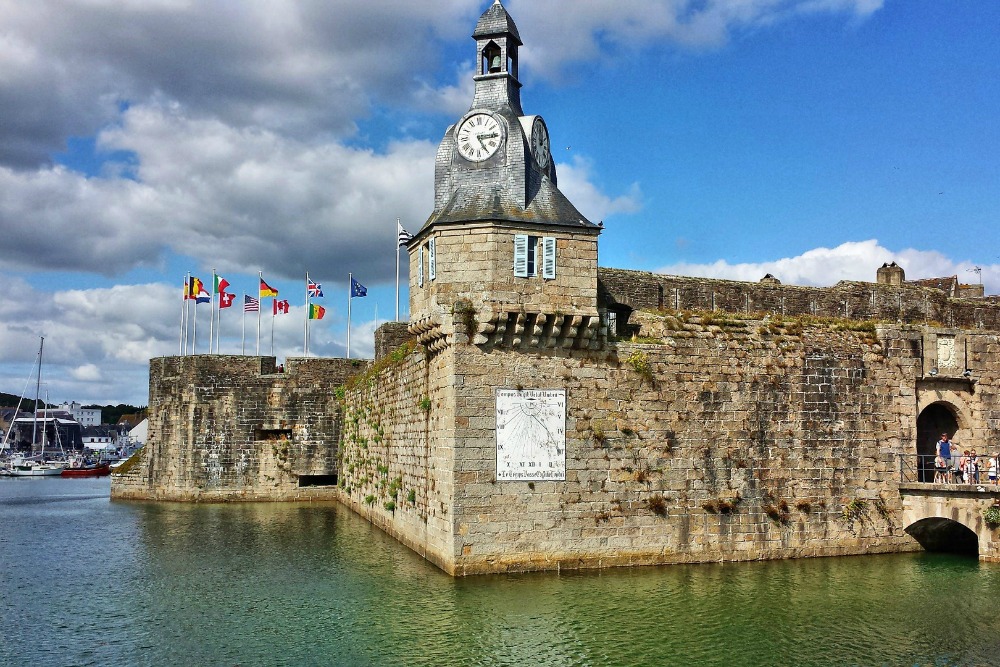
MUST DO IN CONCARNEAU:
- Ville Close: This walled part of the town on an island provided an excellent defensive position, with just a small bridge linking it to the mainland at the western end and a ferry at the eastern. Today it’s a great place to explore and a walk around the ramparts offers some great views.
- Chateau de Keriolet: Dating back to the 13th-century, the chateau was remodelled in the neo-Gothic style in the 19th-century by a Russian princess. Now restored to its former glory you can tour many of the rooms and the gardens of this impressive chateau.
- Musée de la Pêche: With fishing so important to Concarneau, this museum showcases the history of fishing from prehistory to modern day. Exhibits include the Hemerica semi-industrial trawler, a coelacanth, nautical charts, a coracle and more.
Reviews of Ville Close | Reviews of Chateau de Keriolet | Reviews of Musée de la Pêche
Accessible year-round by a 45-minute ferry ride from Quiberon for passengers and vehicles, this is the largest of the Brittany islands, but still relatively compact at just 20km by 9km.
With rugged ocean coastline on the south-west and pleasant beaches on the north-east, the coastline is quite changeable in a small distance. This has made it a popular place for artists including Monet and Sara Bernhardt to find inspiration.

Photo Credit: Martyn Wright
MUST DO ON BELLE ÎLE:
- Citadel: This impressively preserved star-shaped fort can’t be missed as you arrive at Le Palais. Founded in the middle ages it was rebuilt in the 17th-century by Vauban and today has been restored to its former glory. You can even stay here if you wish, as part of the fortress is now a hotel.
- Visit the Lighthouses: Being an island, protecting ships running aground was important and several lighthouses exist on the island. From Phare des Poulains in the northwest which looks like a small church with the lighthouse on the steeple, Phare du Goulphar which is like a defensive stone tower and Phare de Kerdonis, which looks like a small cottage with a lighthouse in the back garden.
- La Belle Fontaine: This beautifully restored historic monument is one of only two left in France. It was used to supply fresh drinking water to ships and could hold 850,000 litres of potable water. The semi-circular build of the cistern makes for a great photo, especially if the water is perfectly still.
Reviews of the Citadel | Reviews of Phare de Goulphar | Reviews of La Belle Fontaine
Looking for more information to plan your visit to France? You may find these articles helpful.
RESOURCES | PLAN YOUR TRIP TO FRANCE
To book flights, rental cars, accommodations, and activities for your trip, please check out our recommended travel providers, favourite apps and websites.
- For all things France, you can’t go wrong with Rick Steves! Check out his France travel guide, full episodes of his TV show, or download his app for excellent audio tours.
Some of the links in the post above are affiliate links. This means if you click on the link and purchase the item, we will receive an affiliate commission but this does not affect the price to you. Please read our full disclosure policy here.
